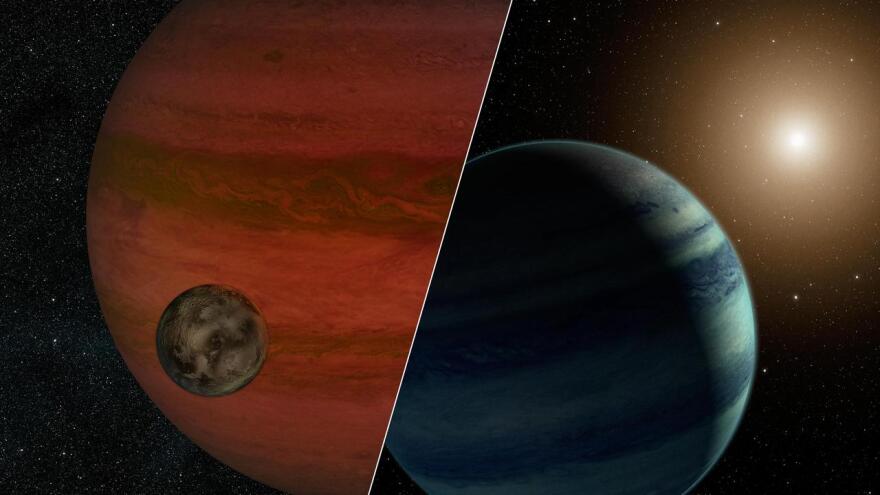On the search for a moon beyond our realm
We’ve talked about planets in other solar systems that orbit stars light years away, but what about moons?
Exomoons are moons that orbit a planet in another solar system.
David Kipping, an astronomer and professor at Columbia University is leading a mission to study one special moon. Kipping chose exoplanet Kepler 167 E as a candidate to find exomoons, which he personally discovered 10 years ago.
The similar qualities between exoplanet Kepler 167 E and Jupiter raises the question of whether it also has Jupiter like moons, which inspired him to propose the usage of the James Webb Telescope (JWST) to find these moons.
“JWST is the first telescope humanity has ever built that could detect moons, as small as those around Jupiter. Those are small little moons, and yet JWST could get them. And so that was our proposal,” said Kipping.
JWST has a 6.5-meter diameter compared to the Hubble Space Telescope 2.4 diameter. This wider aperture gives a narrower view and is optimal in measuring the atmospheres of many exoplanets.
In the long run this research can give us some valuable knowledge on the habitability of moons and the planets in which they orbit, planet formation, and signatures of life.
“We only know of 5000 exoplanets, but there's 100 billion stars in our galaxy alone. So, there's absolutely no shortage of stuff out there,” Kipping said.
Taking a shot at a new camera
NASA is preparing to launch humans back to the lunar surface in the upcoming Artemis missions.
It will be the first-time astronauts have been on the moon in more than 50 years and those of us back here on Earth will get a glimpse of the lunar surface thanks to the photos and videos the astronauts will take. But to do that, NASA and Nikon are working on building a camera to withstand the moon’s harsh conditions.

The Handheld Universal Lunar Camera Mission or HULC is led by Jonathan Pryor, the project manager, and Jeremy Myers, the technical lead.
The camera is meant to be used during intravehicular activity and extravehicular activity. Therefore, the electronics of this camera need to be able to handle extreme cold and hot temperatures, and especially radiation.
“Feature sizes on these electronics are so small, you have a charged particle flying through the universe, comes in contact with your electronics and it can have a destructive effect. Or you can simply flip a one to a zero or a zero to one and your camera or other electronics will totally change what they're doing,” said Myers.
Before launch, the HULC is tested in thermal vacuum chambers to see how it reacts in extreme temperature extremes and medical facilities to conduct radiation tests. One of the solutions to these extremes is the camera’s interface and ability to do a hard rest when it has a disturbance.
What makes this camera special compared to those of the Apollo missions is its modern technological capabilities to downlink images and record video.
“Not only will we see photos, another thing that's different about this camera is it can take videos as well,” Myers said. “Well, we just had the Eclipse. We saw how people react to that when people experience something that maybe once in their lifetime, it can be surprising how we react. I mean, we'll have the first woman on the moon, first person of color on the moon, that will be inspiring to many.”
The HULC’s technological capabilities will showcase images that will engage people across the world and connect with astronauts and their exploration, said Pryor.





